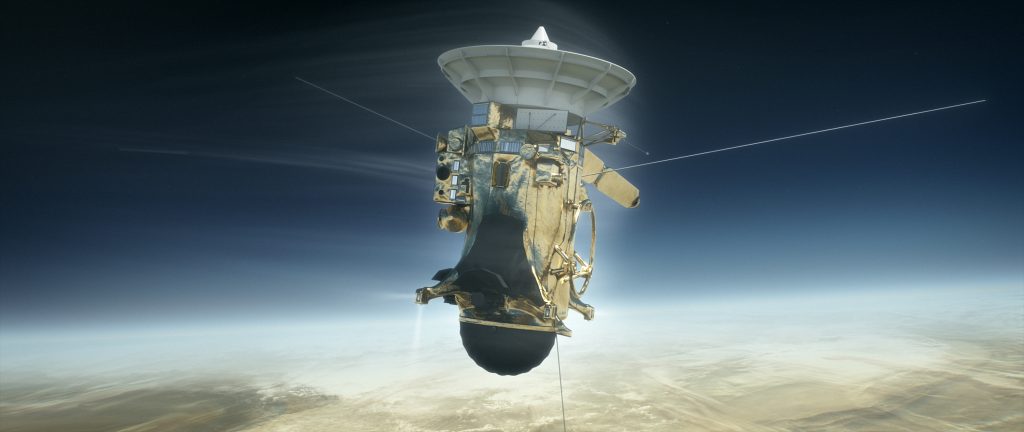[ad_1]
Launched twenty years ago, Cassini actually first arrived in orbit around Saturn in 2004. And since then, Nasa’s robotic spacecraft has been studying the planet and its rings, moons and magnetosphere.
It was in April of this year, that the long-surviving Cassini came back into global attention, with the final phase of its mission, dubbed the Grand Finale. This was a series of 22 “dives” between the planet’s rings.
Like a meteor
On Friday 15 September, however, Cassini will plunge towards Saturn itself, sending back its final shots of information about the planet’s upper atmosphere.
Like a Neil Young lyric, it’s better to burn out than fade away, and the spacecraft will indeed burn up. Like a meteor.
According to wikipedia, the planned “deorbiting” is necessary to “mitigate the risk of the spacecraft eventually colliding with and contaminating one of Saturn’s moons”.
Cassini flight controllers, says Nasa, will monitor the spacecraft’s final transmissions from the Jet Propulsion Laboratory (JPL) Mission Control in Pasadena.
It will be the first time, of course, that a craft has explored this close to Saturn.
A suitably dramatic conclusion to a hugely impressive mission. What a wonderful testament to the scientific and engineering effort that went into the creation of Cassini and its successful gathering of data.
Huygens probe
Not forgetting, Huygens, too. The orignal mission was Cassini–Huygens, with Cassini being the Saturn orbiter and Huygens the lander, which was intended for Saturn’s largest moon, Titan. It was built by the European Space agency and Italian Space Agency.
The seventeenth century Dutch astronomer, mathematician and physicist Christiaan Huygens was the man who discovered Titan.
Huygens saw action in January 15, 2005. Wikipedia writes:
The Huygens probe, supplied by the European Space Agency (ESA) and named after the 17th century Dutch astronomer who first discovered Titan, Christiaan Huygens, scrutinized the clouds, atmosphere, and surface of Saturn’s moon Titan in its descent on January 15, 2005. It was designed to enter and brake in Titan’s atmosphere and parachute a fully instrumented robotic laboratory down to the surface.
The probe system consisted of the probe itself which descended to Titan, and the probe support equipment (PSE) which remained attached to the orbiting spacecraft. The PSE includes electronics that track the probe, recover the data gathered during its descent, and process and deliver the data to the orbiter that transmits it to Earth. The core control computer CPU was a redundant MIL-STD-1750A control system.
Set the controls for the heart of Saturn!
[ad_2]
Source link

